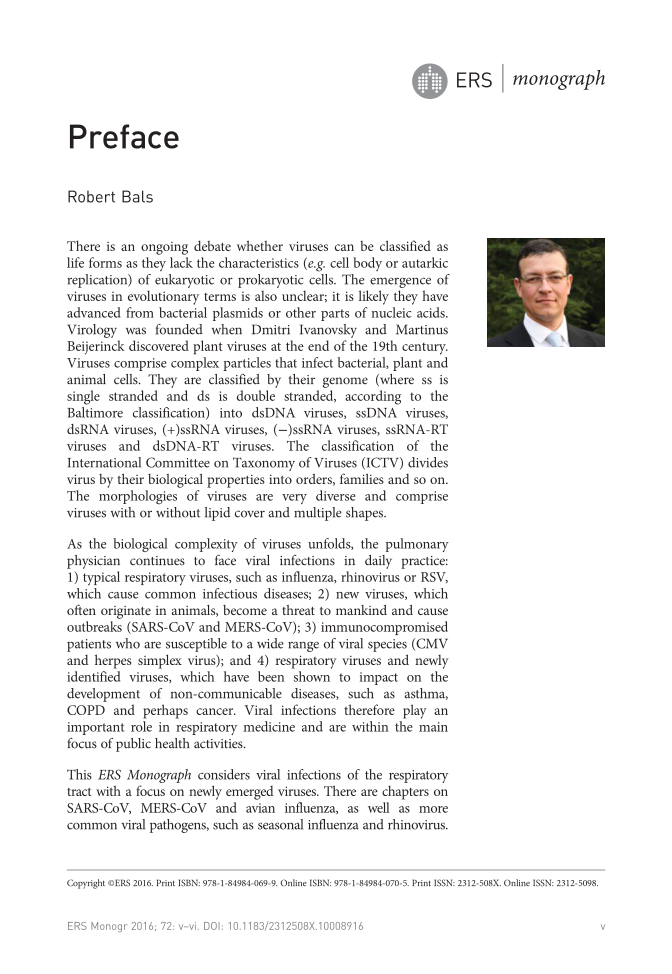ERS | monograph Preface Robert Bals There is an ongoing debate whether viruses can be classified as life forms as they lack the characteristics (e.g. cell body or autarkic replication) of eukaryotic or prokaryotic cells. The emergence of viruses in evolutionary terms is also unclear it is likely they have advanced from bacterial plasmids or other parts of nucleic acids. Virology was founded when Dmitri Ivanovsky and Martinus Beijerinck discovered plant viruses at the end of the 19th century. Viruses comprise complex particles that infect bacterial, plant and animal cells. They are classified by their genome (where ss is single stranded and ds is double stranded, according to the Baltimore classification) into dsDNA viruses, ssDNA viruses, dsRNA viruses, (+)ssRNA viruses, (−)ssRNA viruses, ssRNA-RT viruses and dsDNA-RT viruses. The classification of the International Committee on Taxonomy of Viruses (ICTV) divides virus by their biological properties into orders, families and so on. The morphologies of viruses are very diverse and comprise viruses with or without lipid cover and multiple shapes. As the biological complexity of viruses unfolds, the pulmonary physician continues to face viral infections in daily practice: 1) typical respiratory viruses, such as influenza, rhinovirus or RSV, which cause common infectious diseases 2) new viruses, which often originate in animals, become a threat to mankind and cause outbreaks (SARS-CoV and MERS-CoV) 3) immunocompromised patients who are susceptible to a wide range of viral species (CMV and herpes simplex virus) and 4) respiratory viruses and newly identified viruses, which have been shown to impact on the development of non-communicable diseases, such as asthma, COPD and perhaps cancer. Viral infections therefore play an important role in respiratory medicine and are within the main focus of public health activities. This ERS Monograph considers viral infections of the respiratory tract with a focus on newly emerged viruses. There are chapters on SARS-CoV, MERS-CoV and avian influenza, as well as more common viral pathogens, such as seasonal influenza and rhinovirus. Copyright ©ERS 2016. Print ISBN: 978-1-84984-069-9. Online ISBN: 978-1-84984-070-5. Print ISSN: 2312-508X. Online ISSN: 2312-5098. ERS Monogr 2016 72: v–vi. DOI: 10.1183/2312508X.10008916 v
